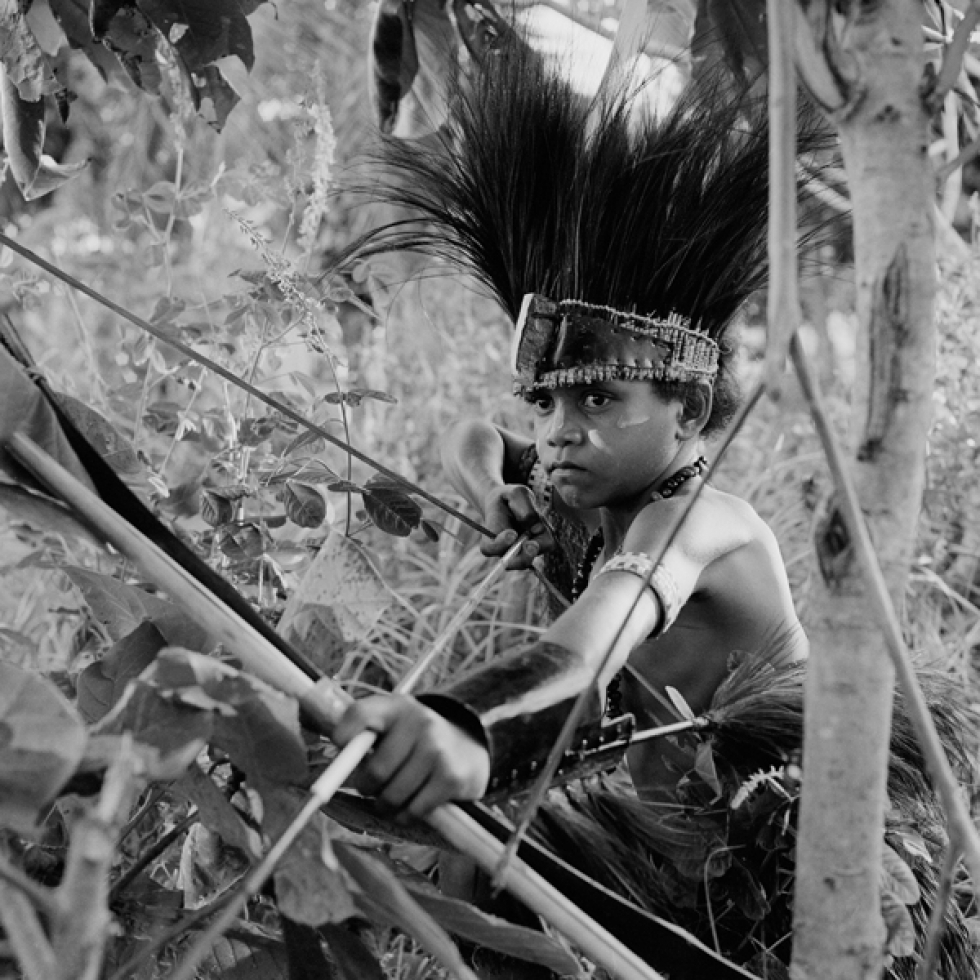
l first met Emmanuel Angelicas in 1986 when l was commissioning photographers to work within Aboriginal and Torres Strait lslander communities on this institute’s After 200 Years’ Photographic Project. At the time, Emmanuel was young and relatively new to his profession but he impressed us not only with the quality of his documentary photography but also with his manner and approach. He was sent to the Torres Strait for two months to work with four different island communities and the results were published in the book I edited for this institute: After 200 Years: Photographic Essays of Aboriginal and lslander Australia Today'(1988).
It was critical to the success of our Project that photographers work closely with community members to ensure that their views of their lives were represented. This involved sensitivity and a capacity for cross-cultural communication and negotiation within a broad ethical framework. Emmanuel excelled in this area, enthusiastically involving people in his work and making the project enjoyable for all concerned. At the same time, the work he produced was of the highest photographic standard providing us with a thorough documentary record of lslander life in the 1980s as well as developing further his own distinctive style.
A dynamic tension between the faithful representation of aspects of people’s lives and the photographer’s own artistic vision lies at the heart of all great documentary photography. Where it exists, the results are pleasing to the subjects of the images as well as possessing the aesthetic appeal necessary to communicate to a wider audience. During his work on our project, Emmanuel demonstrated that he possesses this quality.
I have followed his career with interest since 1988 and seen exhibitions of his Thai, Japanese and Marrickville work. I was particularly delighted with his Marrickville material which presents a stimulating insider’s perspective on an Australian multicultural community. Too often, photographers rely on exotic subject matter to enhance their work and lack the ability to see and to help others see (and consequently value) the everyday lives of ordinary people. Emmanuel’s portrait of his neighbourhood gave new insights into inner Sydney life. His proposed project in Greece does not derive from a quest for the exotic but is an extension of his knowledge and understanding of the Australian Greek Community.The results are likely to offer a new perspective on life in a multicultural Australia.
For the last three years, I have been invited to nominate Australian photographers for the prestigious Mother Jones International Documentary Photography Competition. This year I have included Emmanuel as one of my four nominees as I believe that his work is competitive in the international arena and exemplifies an exciting new genre of Australian documentary photography.
PENNY TAYLOR RESEARCH OFFICER/AFTER 200 YEARS COORDINATOR
AUSTRALIA lNSTITUTE OF ABORIGINAL AND TORRES STRAIT lSLANDER STUDIES
2 APRIL 1992.

